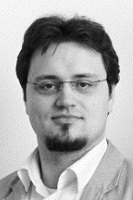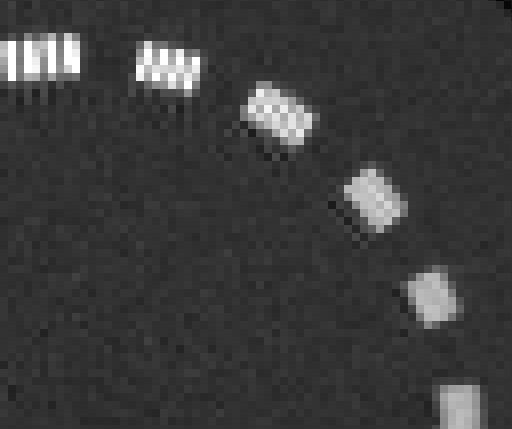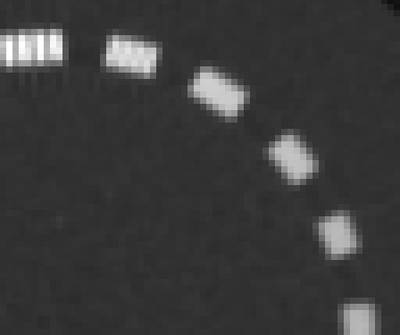
Dr.-Ing. Michael Balda M. Sc.
Alumnus of the Pattern Recognition Lab of the Friedrich-Alexander-Universität Erlangen-Nürnberg
Noise in CT
Image noise has a huge impact on the diagnostic quality of CT images. The noise in the measured data is directly related to patient dose. The dose of a CT acquisition is chosen in a way that noise may not impair the diagnostic quality. If a suitable noise reduction method lowers the noise-level without impairing other image quality factors, such as sharpness, the diagnostic quality can be maintained at lower patient dose.
Besides the patient dose, the reconstruction kernel influences the noise and the image quality in general. Soft kernels are used for diagnostic tasks which do not require a high image resolution. These kernels suppress noise at the loss of image detail. Sharp kernels maintain small structures but do not reduce image noise effectively. Figure 1 shows a comparison of soft hard kernels on a reconstruction of a high contrast phantom with fine resolution structures.


Fig. 1: Hard- (left) and soft (right) reconstruction kernel examples.
More sophisticated noise reduction methods try to maintain as much image detail as possible while reducing image noise. This process requires analytic techniques to assess the noise and image properties in order to locally adapt noise filters to the local properties. Well known examples from image processing are bilateral filtering or anisotropic diffusion filtering. These methods can be adapted to CT data.
In CT, two filtering strategies are possible: Filtering can be applied in the measurement / projection domain (pre-reconstruction) or in the image / volume domain (post-reconstruction.
Pre-reconstruction filtering has the advantage, that noise properties in the measurement domain can be described analytically and the influences of the measurement system are well known, however, the signal-to-noise (SNR) in the projection values is rather bad, so the signal properties can hardly be exploited.
Post-reconstruction methods suffer from the opposite phenomena: The noise properties in the image domain are complex. The noise is inhomogeneous and non-stationary. The reconstruction process introduces various noise correlations which are heavily dependent on the properties of the reconstruction process, so noise adaption becomes complex as well.
Sources of Noise
The two main sources of noise in the CT projection data is Quantum noise and Electronics / Detector Noise. Quantum noise is directly related to the number of incoming X-ray photons. It follows a Poisson distribution. For a mean number m of incoming photons its standard deviation is square-root of m. It can be shown, that the standard deviation in the measured attenuation values is approximately \frac{1}{\sqrt{m}}. See [Buzug03] pp. 397 for the complete derivation.
Detector noise has different sources such as quantization or signal amplification. It is partly independent of the signal power thus it is dominant for low input signal and neglegtible for high signal power / incoming photon energy.
Literature
[Buzug03] Buzug T. M. Einführung in die Computertomographie: Mathematisch-physikalische Grundlagen der Bildrekonstruktion, Springer, Berlin, 2003

 +49 9131 9189774
+49 9131 9189774
 +49 9131 9189772
+49 9131 9189772

